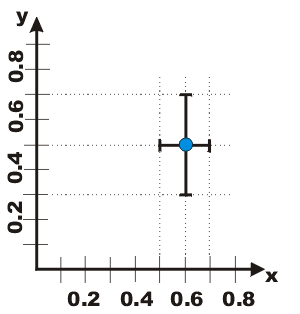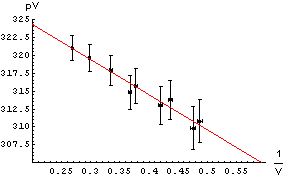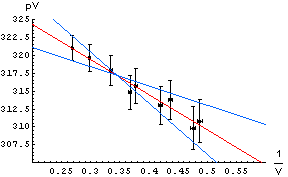Well it's that time again. All the past papers we can get our mitts on are in the shared area, under Science ->A-level->Physics->Advancing Physics->Past Exam Papers.
The paper you will be taking is G492 - Understanding Processes (old spec 2861).
The course content for these units has not really changed, so you should be able to answer all the questions in the older papers.
Note that the structure of the new papers has changed, though. The old section C was longer writen questions, and these may appear in the new sections A or B. The new section C is about the advance notice article.
If you lose your copy of the advance notice article, you can download another copy here: http://www.ocr.org.uk/Data/publications/prerelease_materials/AS_Level_Physics_B_PRM_Unit_G492_Advance_Notice_Article_Jun_2009.pdf
If you get stuck on any of the papers, or just feel there is any part of the course you are not comfortable with, find either myself or Mrs McKnight and we will work through it with you.
Good luck!
Thursday 30 April 2009
Sunday 29 March 2009
Graphs with error bars
A few people have asked me about this, so I thought I'd clarify things.
1. You should include a graph of your results. If you are not sure of what to graph, come and ask me, but the general rule is this: try to rearrange your equation so that the result you are trying to find is related to the gradient of the graph.
Say you are calculating acceleration using F = ma. If you draw a graph of F against m, your line gradient will give you a.
A more complicated example: If you are measuring the density (ρ) of spheres of the same substance, you could use
ρ = 4Πr3/3m
Rearrange this to
r3 = 3ρm/4Π
So if you plot r3 against m, you can find the density from the gradient: 3ρ/4Π
Why calculate from a graph? Using the gradient of a straight-line graph is a much better way than an average to calculate your result, as it puts more emphasis on results closer to the trend, and ignores outliers.
2. So you know what to plot - how do you plot it?
It is worth plotting at least one graph on paper, rather than using excel, as excel is stupid. It cannot tell what is an outlier and what isn't. You, in contrast, are not stupid and can judge things very well by eye.
Step 1 - draw your points. These should be your averages for each value - remember you should document ALL your results, but ignore any obvious anomalies when working out your average.
Step 2 - error bars. These should be in both the x and y direction. The errors in your dependent variable should go from your smallest to your biggest result. The errors in your independent variable should simply plus and minus the error in your measurement of that variable.

They should look like this:
Examples:
I'm plotting my F=ma graph, and for a mass of 1±0.1kg I had F values of 1.00N, 1.20N, 1.30N and 3.00N. Ignoring the 3N outlier, we calculate the average: 1.17N and plot our point at (1, 1.17). The horizontal (mass) error bars will go from 0.9 to 1.1kg. The vertical (force) error bars will go from 1.00 to 1.30N. If some of your errors are too small to show up on the graph, then don't plot them.
Remember if you are plotting something squared or cubed, remember to square or cube your error values. If you were plotting m2 above instead, your error bars would go from 0.92 to 1.12.

Step 3 - draw your line. This is a single straight line that follows the trend of your results. Calculate the gradient of your line, and this will give you your value.

Step 4 - errors in your value. This is a good way to work out errors in your result. Draw two extra lines on your graph with the maximum and minimum gradients possible that still fit within most of your error bars. Calculate these gradients, and they should give you a maximum and minimum for your value that fit your results, and thus a range for your result.
1. You should include a graph of your results. If you are not sure of what to graph, come and ask me, but the general rule is this: try to rearrange your equation so that the result you are trying to find is related to the gradient of the graph.
Say you are calculating acceleration using F = ma. If you draw a graph of F against m, your line gradient will give you a.
A more complicated example: If you are measuring the density (ρ) of spheres of the same substance, you could use
ρ = 4Πr3/3m
Rearrange this to
r3 = 3ρm/4Π
So if you plot r3 against m, you can find the density from the gradient: 3ρ/4Π
Why calculate from a graph? Using the gradient of a straight-line graph is a much better way than an average to calculate your result, as it puts more emphasis on results closer to the trend, and ignores outliers.
2. So you know what to plot - how do you plot it?
It is worth plotting at least one graph on paper, rather than using excel, as excel is stupid. It cannot tell what is an outlier and what isn't. You, in contrast, are not stupid and can judge things very well by eye.
Step 1 - draw your points. These should be your averages for each value - remember you should document ALL your results, but ignore any obvious anomalies when working out your average.
Step 2 - error bars. These should be in both the x and y direction. The errors in your dependent variable should go from your smallest to your biggest result. The errors in your independent variable should simply plus and minus the error in your measurement of that variable.

They should look like this:
Examples:
I'm plotting my F=ma graph, and for a mass of 1±0.1kg I had F values of 1.00N, 1.20N, 1.30N and 3.00N. Ignoring the 3N outlier, we calculate the average: 1.17N and plot our point at (1, 1.17). The horizontal (mass) error bars will go from 0.9 to 1.1kg. The vertical (force) error bars will go from 1.00 to 1.30N. If some of your errors are too small to show up on the graph, then don't plot them.
Remember if you are plotting something squared or cubed, remember to square or cube your error values. If you were plotting m2 above instead, your error bars would go from 0.92 to 1.12.

Step 3 - draw your line. This is a single straight line that follows the trend of your results. Calculate the gradient of your line, and this will give you your value.

Step 4 - errors in your value. This is a good way to work out errors in your result. Draw two extra lines on your graph with the maximum and minimum gradients possible that still fit within most of your error bars. Calculate these gradients, and they should give you a maximum and minimum for your value that fit your results, and thus a range for your result.
Tuesday 10 March 2009
AS Quality of Measurement Coursework Deadlines
Right oh guys, I'm afraid the time for deadlines is upon us. I need to get your coursework in by Easter so I can get it all marked properly.
Some of you need to finish your experiments, and so I am arranging a few lunchtime and after school sessions for you to do so. It would be a good idea to start writing up as much as you can as you go to reduce the amount you will need to do later.
All of you need to write and submit a draft copy asap. - the last possible date I can review drafts is the 25th of March (although this will not leave you much time to make any changes!). Submitting drafts is NOT optional. I need to make sure I have a copy of your work in advance of the final deadline, even if it is at that point unfinished.
The final deadline is the Wednesday before the Easter holidays. IF IT IS NOT IN BY THIS DATE I WILL HAND IN YOUR DRAFT. If I have no draft, I cannot hand in anything and you will be doomed.
HOW TO WRITE UP A REPORT...
Timing...
You have three weeks to write up, which should be fine. Don't leave it all until the last minute. If it helps, I would suggest:
-Method and justification for method: this weekend, finish by 16th March.
-Results tables and graphs: next week, finish by 20th March.
-Analysis of results and evaluation: weekend, finish by 22nd March.
You can then spend the rest of the time improving what you have. I am happy to look voer any sections you have written.
Getting something down...
Don't spend twenty minutes staring at a blank screen trying to work out a pithy opening sentence. Just write it - you can always go back and fix poor phrasing later. Try putting all the points you need to include in bullets and then turning those points into paragraphs.
Some of you need to finish your experiments, and so I am arranging a few lunchtime and after school sessions for you to do so. It would be a good idea to start writing up as much as you can as you go to reduce the amount you will need to do later.
All of you need to write and submit a draft copy asap. - the last possible date I can review drafts is the 25th of March (although this will not leave you much time to make any changes!). Submitting drafts is NOT optional. I need to make sure I have a copy of your work in advance of the final deadline, even if it is at that point unfinished.
The final deadline is the Wednesday before the Easter holidays. IF IT IS NOT IN BY THIS DATE I WILL HAND IN YOUR DRAFT. If I have no draft, I cannot hand in anything and you will be doomed.
HOW TO WRITE UP A REPORT...
Timing...
You have three weeks to write up, which should be fine. Don't leave it all until the last minute. If it helps, I would suggest:
-Method and justification for method: this weekend, finish by 16th March.
-Results tables and graphs: next week, finish by 20th March.
-Analysis of results and evaluation: weekend, finish by 22nd March.
You can then spend the rest of the time improving what you have. I am happy to look voer any sections you have written.
Getting something down...
Don't spend twenty minutes staring at a blank screen trying to work out a pithy opening sentence. Just write it - you can always go back and fix poor phrasing later. Try putting all the points you need to include in bullets and then turning those points into paragraphs.
Labels:
advancing physics,
coursework,
deadlines
Wednesday 4 March 2009
Having difficulty with your maths?
Ms Pavlidou of Cleeve School created this pack to give Advancing Physics students a hand with the more difficult bits of maths, like rearranging equations, logarithms, graphing techniques etc.
http://advancingphysics.iop.org/Maths%20booklet.doc
Definitely worth downloading if you're not doing maths at A-level, and probably even if you are :)
http://advancingphysics.iop.org/Maths%20booklet.doc
Definitely worth downloading if you're not doing maths at A-level, and probably even if you are :)
Saturday 28 February 2009
When MRIs go wild
Just thinking about playing with the magnet today...
An MRI uses an incredibly powerful magnetic field - around 3T or so. (a bar magnet is about 0.01T). Sometimes people don't realise this, and put metal things near one. And carnage ensues. Below is an MRI in its natural habitat, digesting an unfortunate ICU bed.
There's a link in the interesting things section with some more pictures, including a video of someone trying to save a chair.

An MRI uses an incredibly powerful magnetic field - around 3T or so. (a bar magnet is about 0.01T). Sometimes people don't realise this, and put metal things near one. And carnage ensues. Below is an MRI in its natural habitat, digesting an unfortunate ICU bed.
There's a link in the interesting things section with some more pictures, including a video of someone trying to save a chair.

Labels:
d'oh,
magnetic fields,
medical physics
Wednesday 25 February 2009
Subscribe to:
Posts (Atom)
